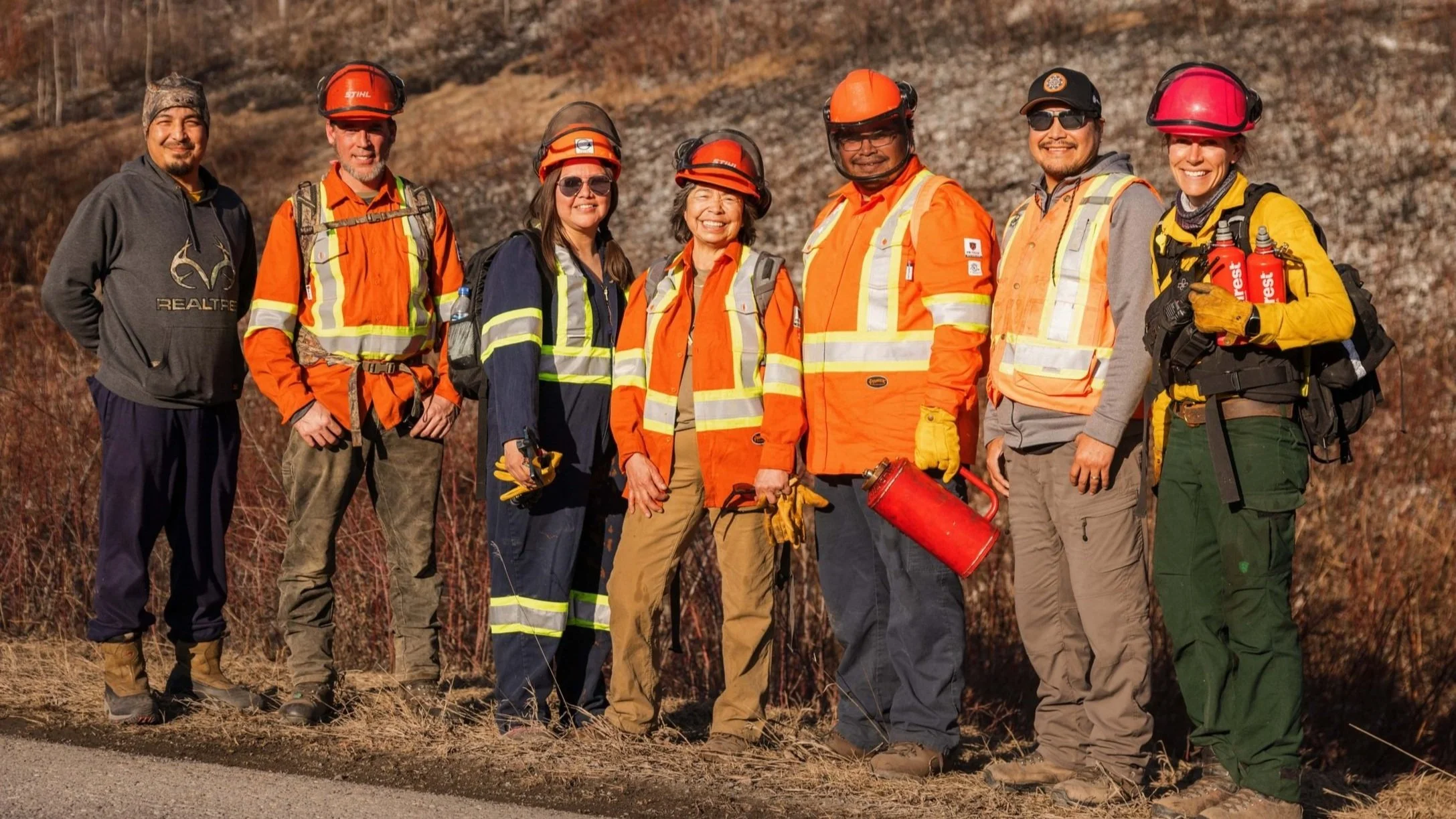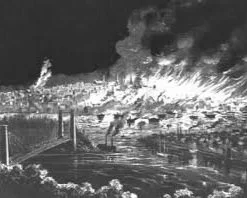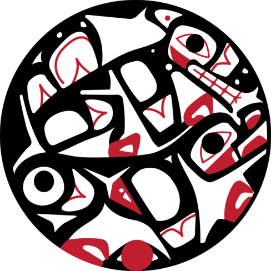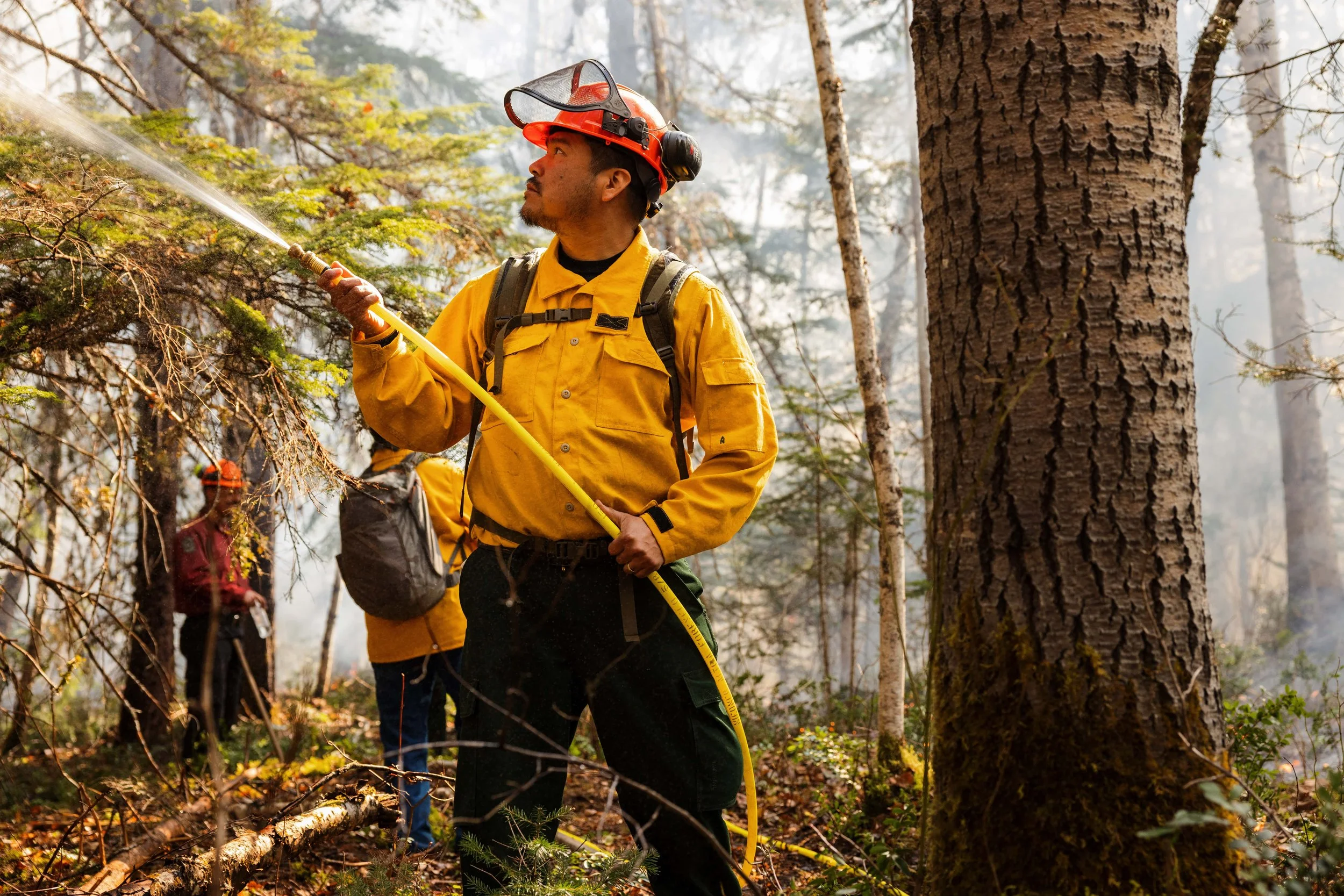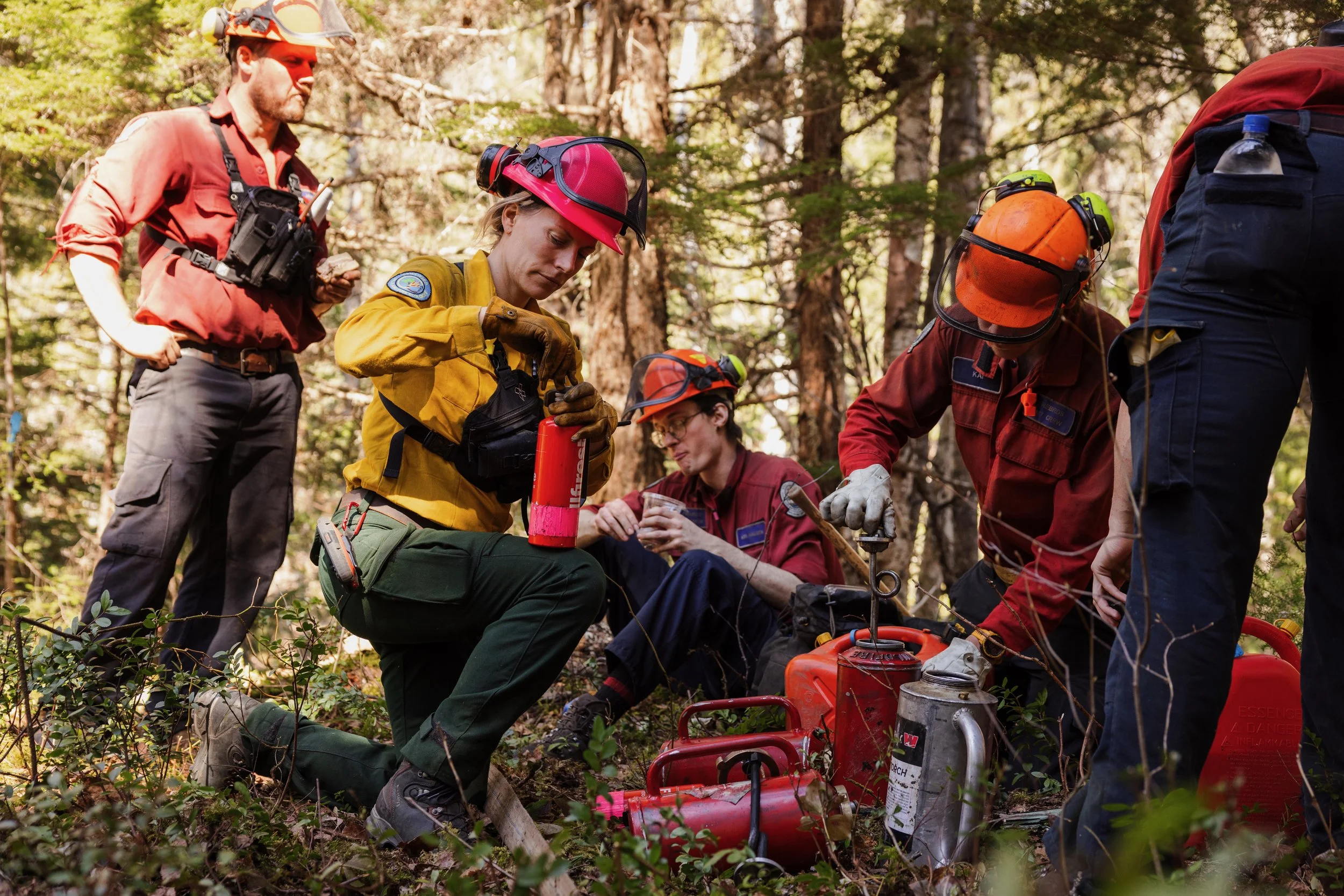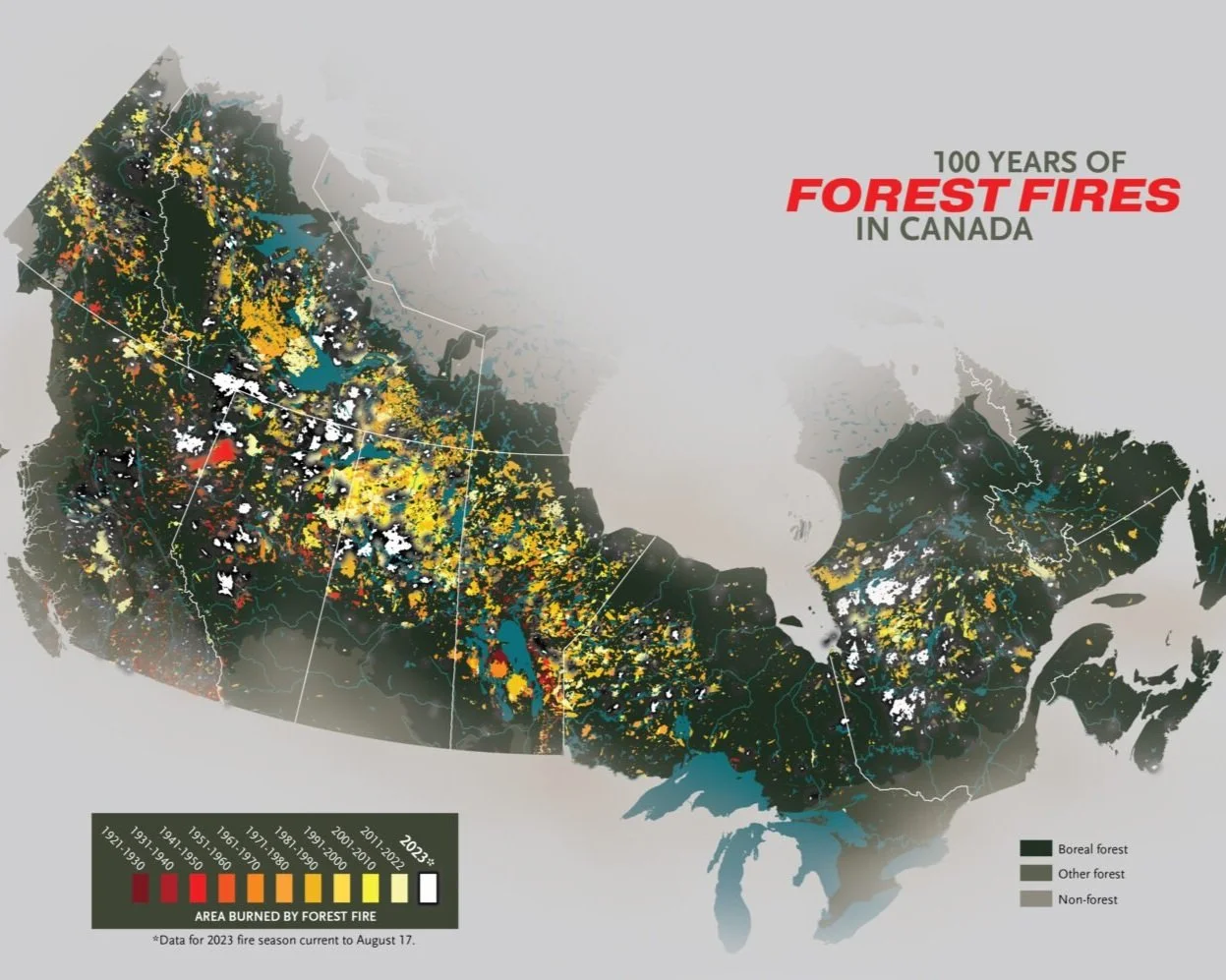Fighting Fire with Food
Supporting the Gitanyow Nation in Reviving Cultural Burning: Restoring Healthy Ecosystems and Reducing Wildfire Risks
2023 Trebek Grantee and National Geographic Explorer
Kira Hoffman
Kira is partnering with the Gitanyow Lax’yip Guardians to restore fire stewardship practices that effectively nurtured the land for thousands of years.
Reviving Indigenous Fire Stewardship Practices Suppressed For Over a Century
For thousands of years, Indigenous communities in what is now British Columbia harnessed the power of fire to shape their landscapes, cultivating ecosystems rich in plant and animal life.
However, in the early 20th century, government policies suppressed these practices, leading to habitat degradation and increased wildfire risk.
With support from 2023, Trebek Grantee and National Geographic Explorer Kira Hoffman, whose 'Fighting Fire with Food' project weaves Indigenous and Western science together, the Gitanyow Nation is reigniting these practices to heal its land.
Together, they are working to revive healthy ecosystems, reduce the threat of uncontrolled wildfires, and secure food resources.
Indigenous communities in Canada face a
43%
higher likelihood of evacuation due to wildfire
Reviving cultural burning is a proactive solution to help reduce wildfire risk and restore ecological communities.
EXPLORE THIS PROJECT
PHOTOS FROM THE FIELD
See the Action Behind Controlled Burning
Experience intentional fire management up close.
These photos capture controlled burns, community involvement, ecological monitoring, and the regrowth of native species.
Hear of projects in other parts of the world in this National Geographic podcast discussing Indigenous fire practices in the American West.
CULTURAL BURNING
Reviving Cultural Burning: Restoring Balance
Indigenous communities used fire for generations to shape resilient landscapes and boost biodiversity.
Suppressed for nearly a century, these practices are being revitalized across Canada.
Discover how fire management is transforming ecosystems, restoring native species, and renewing the land.
SCIENCE OF FIRE
Science of Fire Stewardship: Understanding the Impact
Controlled burns restore and protect landscapes.
Research blends Indigenous and Western science to assess soil health and biodiversity, and monitor future fire resilience.
Discover how fire stewardship enhances biodiversity and strengthens ecological stability.
HISTORY & CULTURE
History of Burning in Canada: A Legacy Interrupted
For thousands of years, Indigenous communities used fire to sustain ecosystems.
In the late 1800s, government policies enforced fire suppression, disregarding Indigenous knowledge.
Learn about the legacy of traditional fire management in Canada and the consequences of fire suppression.
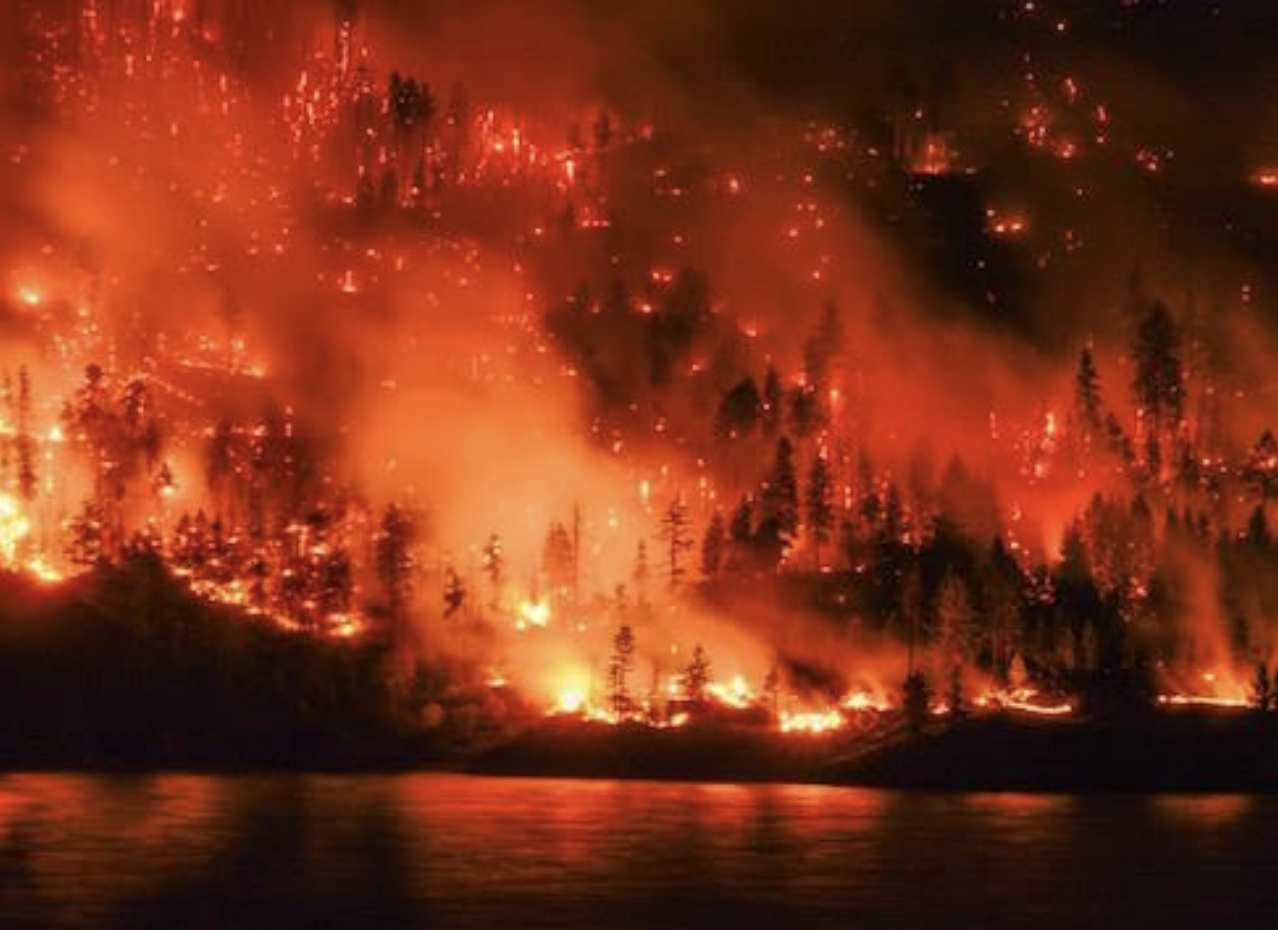
Wildfires Rising:
A Challenge for Indigenous Lands
Wildfires are becoming increasingly frequent and destructive, especially on Indigenous territories like those of the Gitanyow Nation. These fires threaten food security, cultural practices, and community resilience.
Changing climate and fire suppression policies have created the perfect storm, leaving Indigenous communities vulnerable to longer, more intense, and more damaging wildfire seasons.
How are Wildfires Changing?
-
The number of wildfires in British Columbia has increased, with an average of 1,600 wildfires annually over the past decade.
The 2023 wildfire season was the most impactful on record, with over 2.84 million hectares burned and tens of thousands of people evacuated.
Rising temperatures and prolonged drought conditions are key factors contributing to the increasingly severe wildfires.
-
Wildfire seasons start earlier and last longer; extending the period, fires can ignite and spread.
Deep drought conditions and expected warmer temperatures mean wildfire seasons start earlier and last longer.
-
Wildfires are becoming more intense, with higher temperatures and stronger winds driving more severe fires.
Increased fire intensity makes them harder to control, resulting in more widespread destruction.
-
The overall damage caused by wildfires has escalated, affecting larger areas and leading to substantial ecological and economic losses.
The 2023 wildfire season saw record-breaking destruction. Over 15 million hectares were burned across Canada, causing extensive damage to homes, infrastructure, and ecosystems.
Why are Wildfires on the Rise?
-
Rising temperatures (+1.4°C in summer over the last century) and prolonged droughts have made British Columbia's forests increasingly vulnerable to wildfires.
Decreased precipitation (both in the winter and summer months) has left landscapes drier and more prone to ignition.
Warmer and drier summer conditions have increased lightning frequency, producing more wildfires.
-
Climate change and human activities have caused vegetation shifts, increasing the available fuel for wildfires.
Invasive species like Scotch broom and gorse have spread widely, displacing native plants and creating denser, more flammable vegetation.
-
Deforestation, land development, and accidental ignitions significantly contribute to wildfires.
Logging activities throughout British Columbia leave behind vast amounts of wood waste, and can fuel fires during the wildfire season.
Agricultural burns, recreational campfires, and industrial logging are sources of unintended ignitions. These activities often lead to fires that spread quickly, especially in dry, remote areas with limited fire control resources.
Off-road vehicle use and discarded cigarette butts are additional human-caused factors that ignite wildfires.
-
A century of fire suppression and a changing climate in British Columbia have created unnatural fuel accumulations, increasing wildfire risk.
Without cultural and lightning ignitions providing a continuous cycle of mixed-severity fires (low, moderate and high) in areas such as Gitanyow Nation's territory, the forests have become densely packed with underbrush and combustible materials.
These dense forests are now susceptible to intense wildfires, as they lack the natural thinning process that controlled burns and wildfires once provided.
The build-up of dry fuel, such as fallen branches and dead trees, has turned these forests into tinderboxes waiting for ignition.
The Gitanyow Nation’s Crest
Representing strength, tradition, and connection to the land.
Gitanyow Nation: Reclaiming Fire
The Gitanyow Nation is reclaiming the tradition of cultural burning as a proactive measure to mitigate wildfire risks and restore ecological balance.
For generations, controlled burning has shaped resilient landscapes, employing fire as a tool for renewal rather than destruction.
By reviving this practice - the Gitanyow Nation is not only preventing wildfires but also breathing new life into its ecosystems and creating diverse habitats that support biodiversity and community resilience.
Cultural burning nurtures healthier crops, regenerates medicinal plants, and supports a thriving environment where both people and wildlife flourish.
Learn more about the Gitanyow Nation restoring cultural burning as a proactive solution to reduce wildfire risks and restore ecological balance by clicking the button below.
Cultural Burning Explained






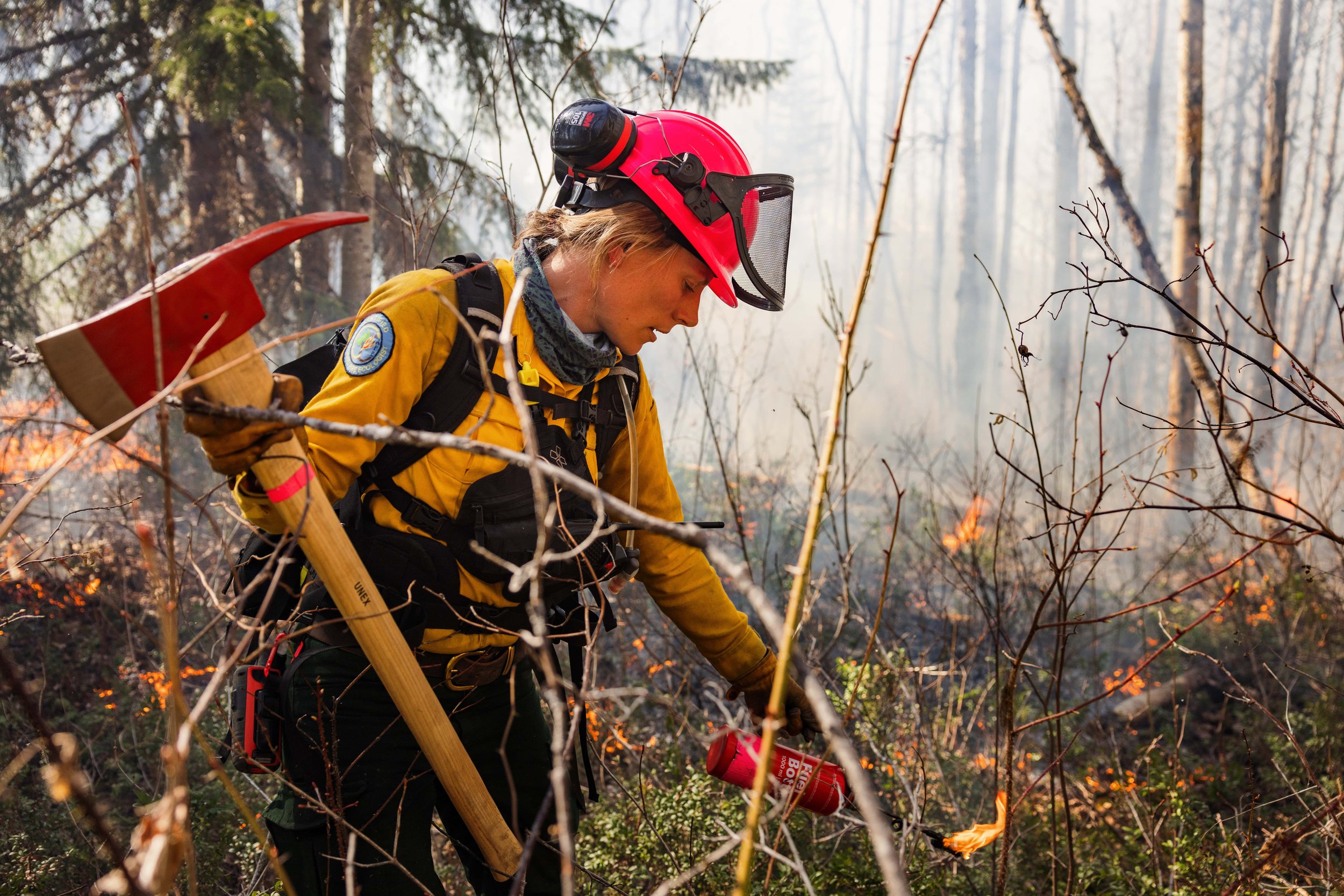
“ This project is about more than just fire; it’s about using fire to nurture the land, promote biodiversity, and ensure food security for communities. By bringing together Indigenous and Western science, we can collaborate to create resilient ecosystems and support the cultural heritage of the Gitanyow Nation. ”
Benefits of Cultural Burning
Kira works alongside the Gitanyow Guardians as they prepare to burn.
Supporting Gitanyow Nation:
Indigenous and Western Science Together
Dr. Kira Hoffman supports Indigenous-led approaches to cultural burning with the Gitanyow Nation across their Lax’yip (territory).
Gitanyow leads the project, using Indigenous science together with Western science and monitoring methods to apply cultural fire. Kira supports prescription development, burn planning, monitoring and fire effects of the burn to specific cultural values.
By spanning organizations and practices, Kira's work helps ensure that the benefits of cultural burning are recognized, documented, and integrated into effective forest management policies.
Similar cultural burning practices are successfully being revived worldwide to mitigate wildfire risks and restore ecosystems—Aboriginal peoples in Australia have used fire for generations to manage their landscapes effectively.

“Cultural burning to me is a connection with my ancestors, a connection to the spirit world. The smoke sends our prayers to our ancestors — it’s helping connect our DNA to the land”
The Gitanyow Lax’yip Stewardship Guardians are the ‘eyes and ears’ on the Lax’yip (Territory) and are critical in environmental and cultural monitoring.
LAX’YIP GUARDIANS
MEET THE
Project Background and Approach
Project Outcomes
This project highlights the cultural importance of fire and its ecological benefits.
The goal is to support a greater understanding and integration of Indigenous fire stewardship into broader land management strategies, ultimately contributing to more resilient ecosystems and sustainable communities.
Learn more about how Indigenous practices help prevent wildfires through culturally-driven methods.
Demonstrate the Impact of Burning
-
Working with Elders: Elders and Guardians lead to ensure the cultural practices of fire stewardship are preserved and applied where appropriate.
Community-led Research: Workshops and field activities bring the community together, supporting ownership and passing down fire management skills across generations.
-
Oral Histories and Field Studies: Supporting knowledge development through interviews with Elders and conducting field research to document the impacts of cultural burns on plants, soil, and wildlife.
Ecological Monitoring: Measuring changes in plant diversity, soil nutrients, and wildlife habitats to demonstrate how cultural burning enhances ecosystem resilience.
-
Youth Involvement: Engaging young people in learning about cultural fire practices through hands-on activities and workshops.
Public Education: Developing accessible resources to raise awareness about the cultural and ecological significance of fire stewardship.
Food Security and Forest Policy
-
Restoring Native Species: Reintroducing fire to promote culturally important species like black huckleberry, supporting both food security and wildlife habitat.ttt
Wildlife Support: Creating habitats that provide food for game species like deer and moose, crucial for local food systems.
-
Policy Advocacy: Using data to influence regional and provincial fire and forest management policies, promoting Indigenous-led fire stewardship into current practices.
Collaborative Partnerships: Working with government agencies and other stakeholders to drive policy changes that recognize the value of cultural burning for long-term forest health.
Weaving Indigenous and Western Science
Methods for Monitoring







“‘I love all of the fire work that Gitanyow is doing. It’s building capacity and preparing our very own members in case we do get wildfire in our area and helping us come together as a team for the safety of all who live in this beautiful territory. I believe that educating Wilp members is important for their futures around fire and they will grow to understand the importance of cultural burns and how it affects everyone and everything, from people to animals, plants and the earth. A lot of this great work is also about getting members back out on their land and seeing its beauty as that in itself is very healing”
A Legacy Interrupted:
The History of Fire Stewardship in Canada
Active Cultural Burning in Canada
Six active cultural burning projects in Western Canada demonstrate the impact of traditional fire stewardship and offer insights into how controlled burning can rejuvenate ecosystems, mitigate wildfire risks, and strengthen cultural ties.
Gitanyow Lax’yip Guardians
(2023, British Columbia)
A collaborative effort between the Gitanyow Lax’yip Guardians, fire ecologist Kira Hoffman, and BC Wildfire Service has returned the benefits of cultural burning to the Nation.
The project blends Indigenous and Western science fire applications and monitoring efforts. Early results highlight the importance of Indigenous-led stewardship in improving ecosystem health while supporting respectful knowledge exchange. Learn more about Using Fire to Heal the Land
Multiple B.C. Indigenous Communities
(2023, British Columbia)
This effort, led by the Xwísten (Bridge River) First Nation, Shackan Indian Band, and Yunesit’in National Government, in partnership with the First Nations’ Emergency Services Society, is an Indigenous response to climate change. Cultural burning is being employed to address drought and wildfire, with initial signs of success in enhancing biodiversity and landscape resilience.
Though bureaucratic challenges persist, this project demonstrates how traditional knowledge can effectively tackle modern environmental threats by linking cultural practices with climate resilience
Discover new research that finds that Canada needs Indigenous-led fire stewardship
Waterton Lakes National Park
(2022, Alberta)
A partnership between Parks Canada and the Kainai Nation brought cultural burning beyond national park boundaries, integrating traditional protocols like blessing ceremonies to honour the spiritual significance of fire.
The burn is already showing positive effects on plant regeneration and biodiversity. This collaboration stands as an example of how cultural practices can be honoured alongside modern conservation strategies, fostering both ecological balance and community healing
Find out how Waterton Lakes National Park worked closely with Kainai Nation
Salish Fire Keepers Society
(2022, British Columbia)
The Salish Fire Keepers Society conducted cultural burns with a strong focus on community participation, involving elders and youth to ensure knowledge transmission. Slow, cool burns managed undergrowth and restored culturally significant vegetation.
The involvement of multiple generations has been critical, ensuring that traditional practices are preserved and serve as effective tools in reducing fire risk and restoring native species. Early results emphasize the power of cultural continuity in community-driven conservation
Lil'wat Nation
(2022, Mount Currie, British Columbia)
The Lil'wat Nation conducted a cultural burn aligned with their traditional agricultural cycles to encourage the growth of food and medicinal plants. This approach shows promising results in improving soil health and supporting community resilience.
By aligning fire use with cultural rhythms, the Lil'wat Nation has demonstrated the deep connection between land management and traditional agriculture, offering a unique perspective on how cultural practices sustain both ecosystems and community well-being
Cultural burning practices are returning in British Columbia, led by Indigenous communities working to restore their landscapes and reduce wildfire risks. Learn More about Cultural Burning and Prescribed Fires in Canada
FortWhyte Alive
(2019, Winnipeg, Manitoba)
In 2019, a cultural burn was conducted at FortWhyte Alive in Winnipeg, Manitoba, with a unique emphasis on education. This burn aimed to restore native vegetation while educating the community about Indigenous fire stewardship.
By removing invasive species and rejuvenating native plants, it demonstrated how cultural burning can serve as both a conservation and educational tool, fostering reconciliation by raising awareness of traditional practices.
PROJECT UPDATES
Explore Further
Stories from the Trebek Initiative’s Media Partners
Traditional fire stewardship is regaining recognition for restoring ecological balance and reconnecting communities with their heritage.
Explore these related stories from National Geographic and Canadian Geographic to gain a deeper understanding of traditional fire management's importance and impact.
STORIES
How Australia's Aboriginal People Fight Fire—with Fire
Aboriginal people in Australia have long used fire to manage the land, prevent extensive wildfires, and sustain biodiversity.
Learn how these ancient practices are helping to protect ecosystems and communities.
An Indigenous Practice May Be Key to Preventing Wildfires
Across North America, Indigenous communities are reviving traditional fire stewardship to reduce the risk of destructive wildfires. This article highlights how cultural burns are recognized as a valuable method for preventing large fires while promoting healthier landscapes.
This Indigenous Practice Fights Fire with Fire
In this podcast episode, National Geographic explores how Indigenous communities in the American West are reviving traditional burning techniques to manage their environment and protect against the damaging power of wildfires.
STORIES
Mapping 100 Years of Forest Fires in Canada
How unprecedented was Canada’s 2023 fire season? A look at the past century of fire activity.
PARTNERSHIPS
The Gitanyow Lax’yip Guardians play a vital role in this project, bringing cultural knowledge and community leadership to the forefront.
Their collaboration and support are essential for integrating fire practices into broader land stewardship, ensuring ecological and cultural benefits.
Gitanyow Lax’yip Guardians
The BC Wildfire Service is another key partner in this initiative.
Their expertise in wildfire management helps ensure that the controlled burns are carried out safely and effectively, promoting both landscape restoration and wildfire risk prevention.
B.C WILDFIRE SERVICE
Follow @trebekinitiative on Instagram
For more inspiring stories and discoveries from our Trebek Initiative Grantees.
Stay informed about groundbreaking projects like Kirsten's and witness the journey of exploration, innovation, and hope that illuminates and inspires appreciation for Canada's rich natural and cultural heritage.

